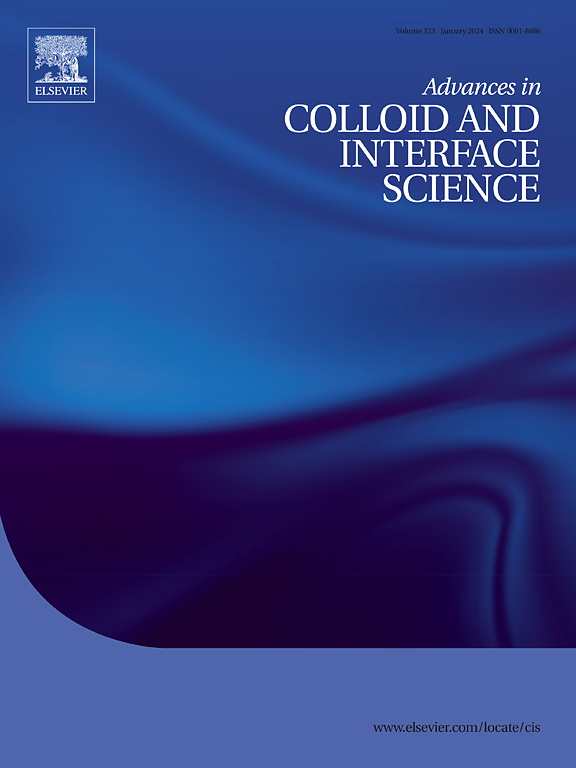Fluid flow characteristics in porous media using Magnetic Resonance Imaging (MRI) technique: Determining the capillary pressure and relative permeability
IF 19.3
1区 化学
Q1 CHEMISTRY, PHYSICAL
引用次数: 0
Abstract
Conventional laboratory methods for measuring and determining fluid flow parameters often involve complexities and simplifications that can lead to inaccuracies. These limitations hinder a comprehensive understanding of fluid flow behavior in reservoirs. This study reviews the use of Magnetic Resonance Imaging (MRI) as a non-invasive technique to investigate key parameters governing fluid flow in porous media, such as capillary pressure and relative permeability. MRI enables direct measurement of capillary pressure without the need for traditional, routine procedures. By analyzing MRI intensity, saturation levels can be determined across different sections of the rock based on hydrogen content. Additionally, MRI allows for the evaluation of porous structures and pore-throat geometry. This technique is particularly effective and efficient for analyzing cores with high capillary pressures and fully water-saturated conditions. It also facilitates the observation of fingering and channeling mechanisms during water or gas injection processes. Relative permeability can be assessed using MRI by analyzing signal intensity and water/oil saturation at specific points within the porous medium. Furthermore, MRI provides insights into breakthrough events for water and gas, as well as the morphology of the displacing front during fluid injection. Despite its advantages, the MRI technique has certain limitations. These include constraints related to spatial resolution and the performance of MRI radiofrequency coils for long core samples. Additionally, its accuracy diminishes in cases of high water saturation at the outlet face of the core or when fluid flow rates are low. The MRI technique based on hydrogen offers significant advantages over traditional methods for measuring capillary pressure and relative permeability, as it directly determines fluid saturation within porous media. This method is highly accurate and efficient, even for cores with higher capillary pressures or fully water-saturated conditions, without requiring the extraction of water from the core. Additionally, MRI enables precise characterization of pore-throat structures, heterogeneities in reservoir rock pore systems, and the mobility ratios of water and oil, which are critical factors in understanding phenomena like fingering and channeling during CO2 capillary trapping. Relative permeability can be derived from MRI analysis by examining saturation levels and fluid flow velocities. The displacement processes of fluids (gas or liquid) within porous media are determined using hydrogen-based MRI signals, as fluids lacking hydrogen produce negligible signal responses. This capability allows for detailed observation of the structure and behavior of injected fluids, including the displacing front at various locations in porous media. It is particularly useful in high-permeability zones where breakthrough events occur under different pressures and flow conditions. Unlike traditional methods, MRI accounts for the capillary end effect—a phenomenon that can introduce errors in evaluating oil/water saturation—by considering stationary wetting phase distribution during relative permeability measurements. This makes MRI a more reliable tool for accurately assessing fluid dynamics in porous media. However, limitations such as resolution constraints and challenges with low flow rates or high water saturation at the outlet face still exist, requiring further optimization for broader applicability. This paper highlights the potential of the MRI technique as a highly accurate, fast, and efficient method for studying fluid flow in the porous media of reservoir rocks. Its application is steadily transforming reservoir rock analysis, offering new perspectives and opportunities for laboratories and research centers in this field.

利用磁共振成像(MRI)技术测定多孔介质中的流体流动特征:毛细压力和相对渗透率
测量和确定流体流动参数的传统实验室方法往往涉及复杂性和简化,可能导致不准确。这些限制阻碍了对储层流体流动特性的全面理解。本研究综述了核磁共振成像(MRI)作为一种非侵入性技术,用于研究控制多孔介质中流体流动的关键参数,如毛细压力和相对渗透率。MRI可以直接测量毛细管压力,而不需要传统的常规程序。通过分析核磁共振成像强度,可以根据氢含量确定岩石不同部分的饱和度。此外,MRI可以评估多孔结构和孔喉几何形状。该技术对于分析具有高毛细压力和完全水饱和条件的岩心特别有效和高效。它还有助于在注水或注气过程中观察指进和窜流机制。相对渗透率可以通过MRI分析多孔介质中特定点的信号强度和水/油饱和度来评估。此外,MRI提供了水和气的突破事件,以及流体注入过程中驱替锋的形态。尽管MRI技术有其优点,但也有一定的局限性。这些限制包括空间分辨率和MRI射频线圈对长岩心样品的性能。此外,在岩心出口表面含水饱和度较高或流体流速较低的情况下,其精度会降低。与传统测量毛细管压力和相对渗透率的方法相比,基于氢的MRI技术具有显著优势,因为它可以直接确定多孔介质中的流体饱和度。该方法精度高,效率高,即使岩心毛管压力较高或水完全饱和,也不需要从岩心中提取水。此外,MRI可以精确表征储层岩石孔隙系统的孔喉结构、非均质性以及水和油的流动性比,这些都是理解CO2毛细管捕获过程中指指和通道等现象的关键因素。相对渗透率可以通过核磁共振分析得出,通过检查饱和度和流体流动速度。多孔介质中流体(气体或液体)的位移过程是使用氢基MRI信号来确定的,因为缺乏氢的流体产生的信号响应可以忽略不计。这种能力允许对注入流体的结构和行为进行详细观察,包括在多孔介质中不同位置的驱替前沿。对于在不同压力和流动条件下发生突破的高渗透层,该方法尤其有用。与传统方法不同,MRI通过考虑相对渗透率测量过程中固定的润湿相分布来解释毛细管末端效应(一种可能在评估油/水饱和度时引入误差的现象)。这使得MRI成为一种更可靠的工具,用于准确评估多孔介质中的流体动力学。但是,仍然存在分辨率限制以及出口面低流量或高含水饱和度的挑战,需要进一步优化以获得更广泛的适用性。本文强调了核磁共振成像技术作为一种高精度、快速和高效的研究储层岩石多孔介质流体流动的方法的潜力。它的应用正在逐步改变储层岩石分析,为该领域的实验室和研究中心提供了新的视角和机会。
本文章由计算机程序翻译,如有差异,请以英文原文为准。
求助全文
约1分钟内获得全文
求助全文
来源期刊
CiteScore
28.50
自引率
2.60%
发文量
175
审稿时长
31 days
期刊介绍:
"Advances in Colloid and Interface Science" is an international journal that focuses on experimental and theoretical developments in interfacial and colloidal phenomena. The journal covers a wide range of disciplines including biology, chemistry, physics, and technology.
The journal accepts review articles on any topic within the scope of colloid and interface science. These articles should provide an in-depth analysis of the subject matter, offering a critical review of the current state of the field. The author's informed opinion on the topic should also be included. The manuscript should compare and contrast ideas found in the reviewed literature and address the limitations of these ideas.
Typically, the articles published in this journal are written by recognized experts in the field.

 求助内容:
求助内容: 应助结果提醒方式:
应助结果提醒方式:


